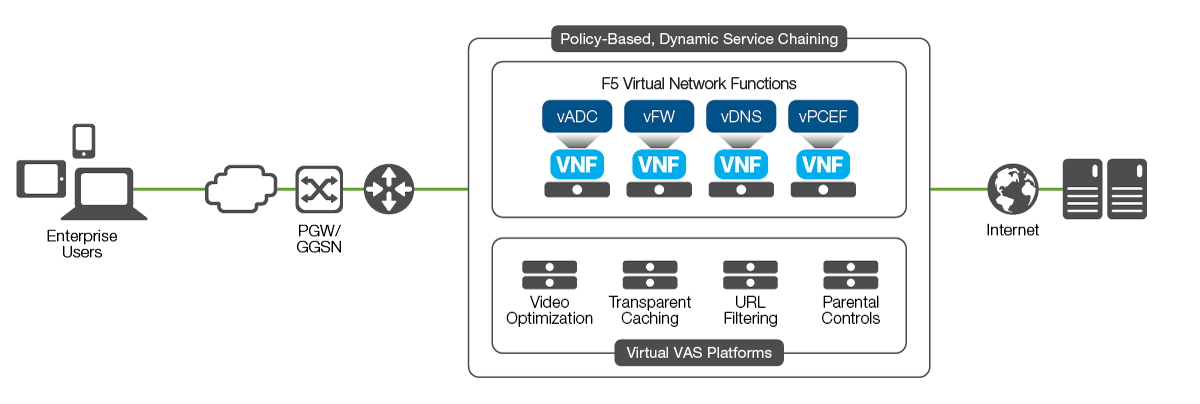Virtual Gi LAN
The increases in traffic, applications, and video streaming are putting a strain on the mobile network, including the Gi LAN. Within the Gi LAN are services including network address translation (NAT), firewall, policy management, traffic steering, and URL filtering, as well as TCP and video optimization. You can intelligently steer traffic, including video traffic, to optimization platforms or apply policy management actions based on subscriber and application awareness.
But, you need to scale out the Gi LAN, which in many cases consists of solutions from multiple vendors. That’s why adding new services to the network can result in increased CapEx and OpEx, as well as introduce additional complexities and increased points of failure into the network. As a result, the delivery of new services to subscribers becomes more complex and can involve major delays, leading to loss of new revenue streams and lowered subscriber quality of experience (QoE).
A virtualized Gi LAN solution from F5 helps you build a cost-effective model, allowing for faster time to market for new services and less network complexity. F5 virtual network functions (VNFs) are a core component within an efficient virtual Gi LAN, providing solutions such as virtual policy enforcement, virtual firewall, and virtual Application Delivery Controller (ADC) services.
These virtual solutions enable you to provide intelligent traffic steering to value-added service (VAS) components. You can dynamically chain together services based on real-time subscriber and application awareness, as well as secure the Gi LAN. By deploying a common, shared set of commercial, off-the-shelf (COTS) hardware to run various functions—network functions as well as software—you can reduce hardware costs and deploy multiple services dynamically. This cloud-like model means you can deliver services based on real-time network conditions and use network resources more efficiently. Because you can launch new services without any network downtime, you also increase service agility. A virtual Gi LAN lets you to innovate, improve subscriber QoE, and lower costs.
- Reduce CapEx and OpEx with COTS hardware.
- Increase service agility with faster build, test, and deploy cycles.
- Simplify the network architecture with software-based network functions.
- Dynamically manage and orchestrate services.
- Tailor innovative services to subscriber preference and usage.
